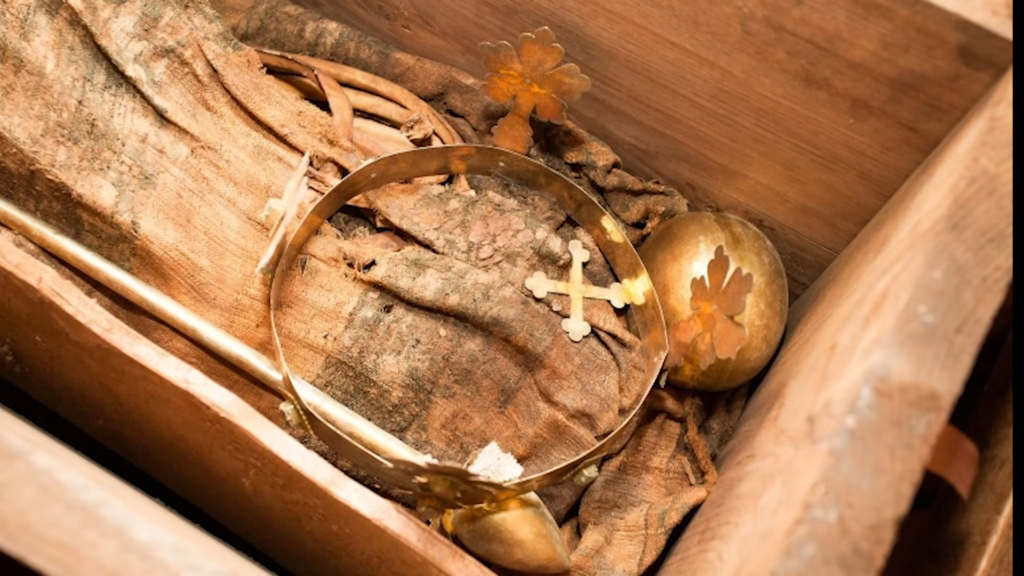We delve into the enigmatic tomb of the Holy Roman Emperor Henry VII, who reigned in the early 14th century. His final resting place lies within the Duomo in Pisa, Tuscany, mere yards away from the renowned Leaning Tower.

The Revelation of 2013
The year 2013 marked the 700th anniversary of Emperor Henry VII’s death, prompting the opening of his tomb. This momentous occasion provided an unprecedented opportunity to unravel the mysteries surrounding his demise and burial practices. What awaited inside was a treasure trove of insights into both his death and the intricate rituals of medieval burial.
Henry VII: A Brief Overview
Henry VII’s ascent to power was as sudden as it was tumultuous. Born into the ruling House of Luxembourg, he initially had no aspirations for imperial stature. However, fate intervened when he was unexpectedly elected as King of the Romans in 1308, later becoming Holy Roman Emperor in 1312. His reign, albeit brief, was fraught with political upheavals and territorial ambitions, particularly in the fractured landscape of Northern Italy.

The Ambitious Quest for Authority
Henry VII’s ambition led him to embark on a mission to consolidate his authority in Northern Italy, a region fraught with division and intrigue. His attempts to assert control, however, met fierce resistance, sparking rebellions and alliances that would ultimately shape his legacy.
The Tragic End
Tragically, Henry VII’s ambitions were cut short when he met an untimely demise in August 1313, under mysterious circumstances. Speculations surrounding his death abound, with theories ranging from malaria to poisoning. Recent scientific analyses of his remains have shed light on the likely cause, suggesting accidental poisoning amidst the chaos of his campaigns.

The Intriguing Funeral Rituals
The opening of Henry VII’s coffin revealed not only his skeletal remains but also a glimpse into the elaborate funeral rituals of the time. His body had undergone a complex process known as mos teutonicus, involving dismemberment, boiling, and subsequent cleaning of the bones. This macabre practice, aimed at preserving the remains for repatriation, underscored the lengths to which medieval elites went to honor their deceased.
Unveiling the Treasures Within
Accompanying Henry VII on his eternal journey were a myriad of artifacts, including a remarkably preserved burial shroud and a collection of funeral regalia crafted from silver gilt. These objects, adorned with intricate designs and symbolism, offer a poignant glimpse into the opulence and reverence accorded to the departed emperor.
A Legacy Unveiled
The legacy of Emperor Henry VII lives on, not only in the annals of history but also in the artifacts and insights gleaned from his tomb. As we continue to unravel the mysteries of the past, his story serves as a testament to the complexities of power, ambition, and mortality that have shaped human civilization.
Join me in the exploration of this captivating tale, as we uncover the secrets within the casket of Emperor Henry VII at Pisa. Don’t forget to like, share, and subscribe for more riveting content, and consider supporting my work through the Antree magazine—a treasure trove of history, art, and architecture delivered straight to your door or inbox. Thank you for watching, and until next time, happy exploring!




